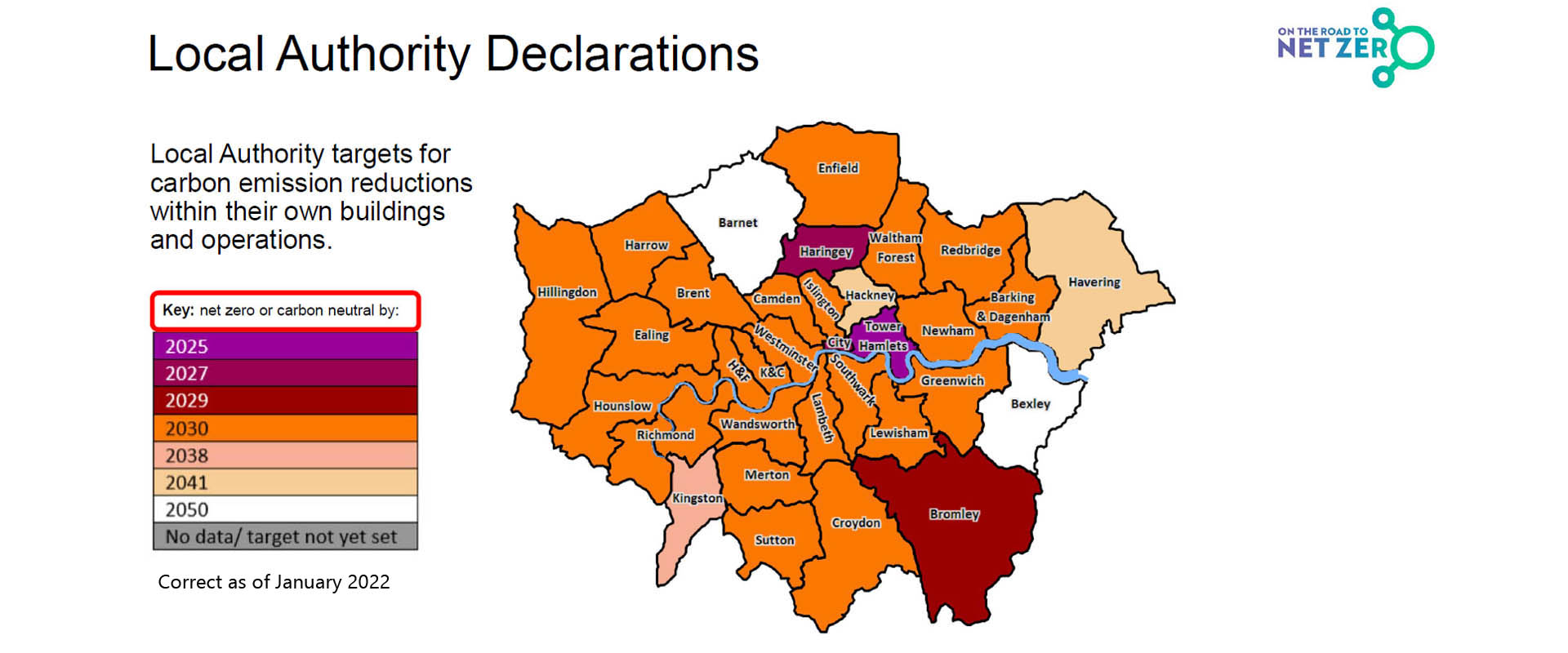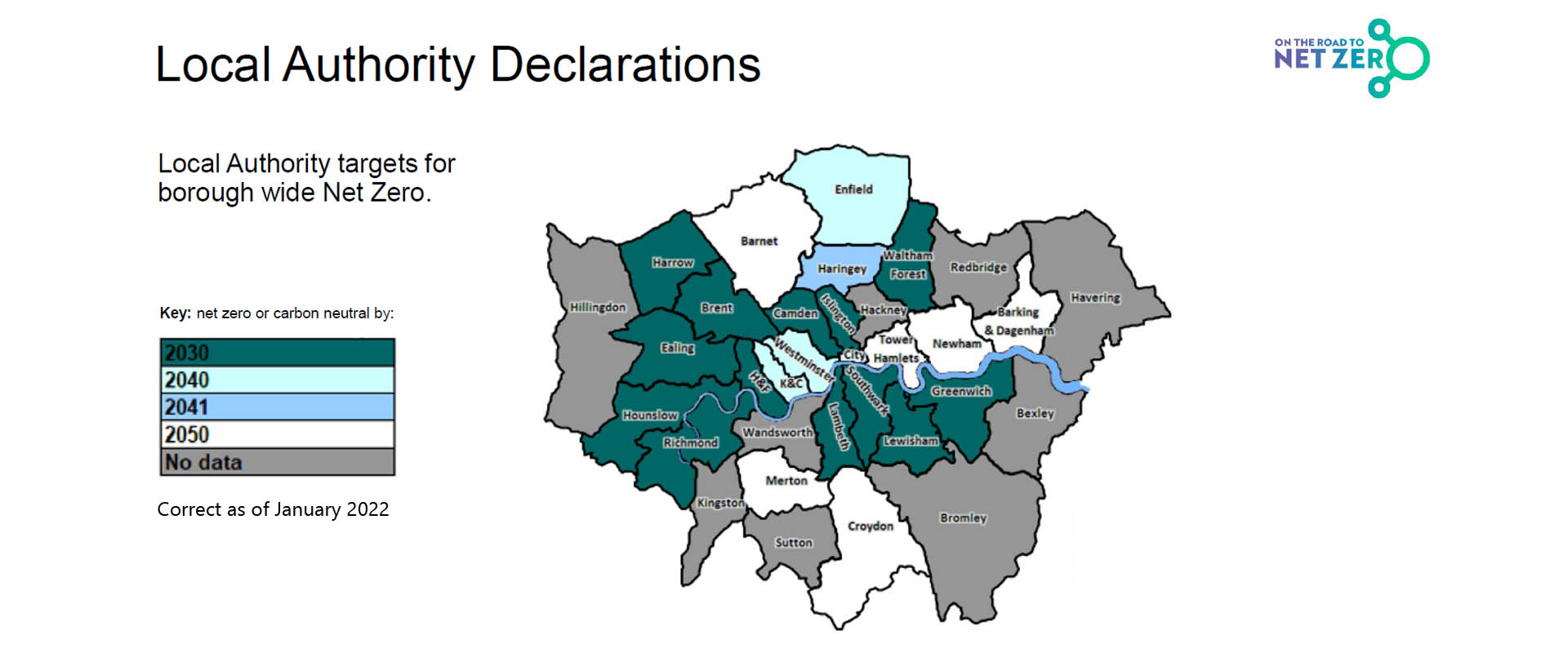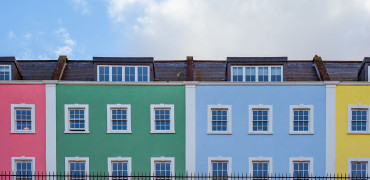If you read my last article on The Hub, looking at the road to Net Zero in Bristol and the Southwest, you’ll know that for a local authority to be able to plan a way to significantly reduce carbon emissions, they are highly dependent on what national government is doing and also need to consider what their neighbouring authorities are up to.
What was interesting about the five local authorities we focused on when we held a Net Zero event in Bristol, was just how different some of them were to each other, in terms of both timing and action plans.
This wasn’t only to do with the political make-up of each authority, but also whether it was rural, city, or a mixture of both.
But London must be different, surely?
After all, everyone’s heard of the London Plan, haven’t they?
Doesn’t that point to one, concerted approach right across the vast metropolis that is Greater London?
Well, not quite, as you soon find out if you dig into the plans of each local authority.
As I hope this article has demonstrated, none of this will be possible in isolation.
A climate emergency
We’ve just completed a Net Zero Roadshow and one of the reasons it was so well received amongst the audience of consultants, contractors, architects, planners and corporate customers, is that we tailored each regional event on the plans for that local area.
And believe me, that involved a lot of research … especially when it came to London.
When we were planning the Roadshow, I interrogated the plans of all 32 London boroughs with 28 of them having declared a climate emergency as of January 2022.
27 London boroughs and the City of London subsequently published Climate Action Plans. At the time, five other boroughs had Plans in development.
What this means for anyone building, renovating or operating a building in Greater London is that almost all boroughs have already published or intend to publish a Plan to tackle carbon reduction and get to Net Zero.

Individual borough targets
These focus on areas within the control of the authority
We have to stop burning ‘stuff’
As a manufacturer of HVAC equipment, we understand that it is often seen as part of the ‘problem’ but we also know that it has to be part of the solution.
We cannot simply remove energy-consuming HVAC from our buildings as occupants will overheat in the summer and freeze in the winter, even in the relatively ‘temperate’ climate here in the UK.
If we want people to be comfortable in buildings, we simply must employ some form of heating and cooling. But that no longer needs to involve carbon-intensive forms of heating such as gas and oil.
And that is where modern heating, ventilation, and cooling systems come in as they can have a major impact on reducing the carbon footprint of a building, whilst still keeping occupants at the temperature they want, regardless of what the weather is like outside.
Size isn’t everything
One of the most interesting factors when looking at the London boroughs is that size really isn’t everything!
When we focus on total emissions data for for example, the City of London is bottom of the league, with significantly less CO2 emitted than any other borough.
Yet when we look at the data in terms of CO2 per capita, the City of London is the worst.
A London-wide approach?
Before we explore the London boroughs in any more detail, it is worth pointing out that this is a fast-moving situation and at the time of writing this, I have based it on the extensive research conducted in January and February of this year.
It is also worth noting out that most boroughs have two Net Zero targets, one for themselves and their operations, and one for the other things beyond their control.
When we prepared our Road to Net Zero Roadshow, all the London Boroughs had declared a date that they would be Net Zero or Carbon Neutral for their own operations by, with Barnet and Bexley setting out 2050.
Other boroughs were more ambitious with Havering and Hackney declaring for 2041; Kingston setting a target of 2038, and the overwhelming majority going for 2030.
Four boroughs were more ambitious with Bromley going for 2029, Haringey and the City of London targeting 2027, and Tower Hamlets aiming to reach their goal by 2025 – in just three years’ time.
Areas within immediate control
The first thing to note about these plans, is that they relate to each authority’s own buildings and operations, which is something that is more directly within their own control.
As highlighted in the opening paragraph, all authorities are highly dependent on both national government and their neighbouring authorities in the meaningful effect they can have on carbon reduction.
This is especially true in London where transport, for example is a complex, city-wide topic. Changing to a fleet of electric buses, is therefore something that an authority may encourage but not have much control over.
Travel and commuting also mean that the populations of a borough change during the day, and are different at the weekend. Tourism also plays a major factor on carbon emissions, depending on how many famous or worthy places you have to visit.
When you therefore drill down into local areas, it is easy to see why these authorities have chosen their own operations.
Tackling the 43% in Hammersmith & Fulham
If we focus on Hammersmith and Fulham, which set a target of 2030, the borough’s non-domestic buildings include 12,000 businesses, 60 schools, 2 main hospitals, 3 football stadiums, 1 prison and a large variety of retail, leisure and entertainment venues.
Together, these account for 43% of the borough’s emissions, so if the Council can do something meaningful to tackle emissions in these buildings, they really can make a difference.
Hammersmith and Fulham’s Climate and Ecology Strategy 2022 sets out what the authority believes it can do to become Net Zero by 2030. In addition to the 43% of emissions from commercial buildings, the report points to homes accounting for another 36% of the borough’s direct emissions.
The majority of emissions from homes are from gas used for heating and hot water, yet poor insulation results in high gas demand and contributes to fuel poverty, with cold homes estimated to cost the NHS around £1.4bn per year.
The Council’s 2030 vision for homes, buildings and energy calls for:
• All residents in the borough living in comfortable, affordably heated and well-adapted homes that are cost efficient and have zero carbon impact
• All business and organisational buildings are powered sustainably, cost efficient and have zero carbon impact
• Our heat and power is supplied by renewable energy and, where possible, efficient local sources
Hammersmith and Fulham has also not shied away from the cost with decarbonising the borough projected to require investment in excess of £2 billion, and the net cost to the council to decarbonise the organisation estimated to be £248m
Towering above the rest
The council with the most ambitious plan is Tower Hamlets has committed to becoming a net zero carbon council by 2025, which, in the authority’s own words:
“… means doing everything we can to improve energy efficiency of buildings, ensuring the council is powered by 100per cent renewable energy, converting street lighting to efficient LED lights, planting more trees in our streets and in our beautiful parks.”
Going beyond what it can do on its own, the authorities Carbon Action Plan calls for a climate alliance with like-minded organisations that want to work with Tower Hamlets to respond to the climate emergency and make the entire borough Net Zero by 2045 or sooner.
As the report states, this: “requires knowledge sharing, collective action, and collaboration across the borough and beyond.
Tower Hamlets has promised to work: “closely with organisations and want to reach our diverse community across the borough to build a cleaner and greener future for all of us.”

Borough-wide plans
The target dates for areas outside of the authority's immediate control are shown here
Fit for a Net Zero future
It would be easy to write a similar piece on each of the London boroughs but the important point to take away (as is the case with Bristol and the Southwest), is that each local authority in London has to adapt its own plan to suit its requirements, capabilities and budget.
For London borough’s though, there is also the important additional factor of the London Plan – the statutory development plan for London, whose policies should inform decisions on planning applications right across the capital.
This includes an Energy Hierarchy showing how each borough can apply Lean, Green and Clean targets for major developments within their area.
For borough’s, this means that their Local Plans must be in ‘general conformity’ with the London Plan, ensuring that the planning system for London operates in a joined-up way and reflects the overall strategy for how London can develop sustainably.
It’s all about the money
As Hammersmith and Fulham have identified, getting to Net Zero will require significant commitment and budget.
And as I hope this article has demonstrated, none of this will be possible in isolation.
For us as a manufacturer, this highlights the importance of building services in achieving a comfortable low-carbon, high-efficiency future.
Whatever we think, and wherever we are on the journey, we are all on the road to Net Zero and existing and forthcoming legislation is forcing everyone to zooming in on carbon reduction in the built environment.
As mentioned though, this is a fast-moving situation, and it really needs to be.
So come and talk to us if you’d like to know more and understand what you can do to develop your own plan for Net Zero.
Chris Newman is Zero Carbon Design Team Manager



